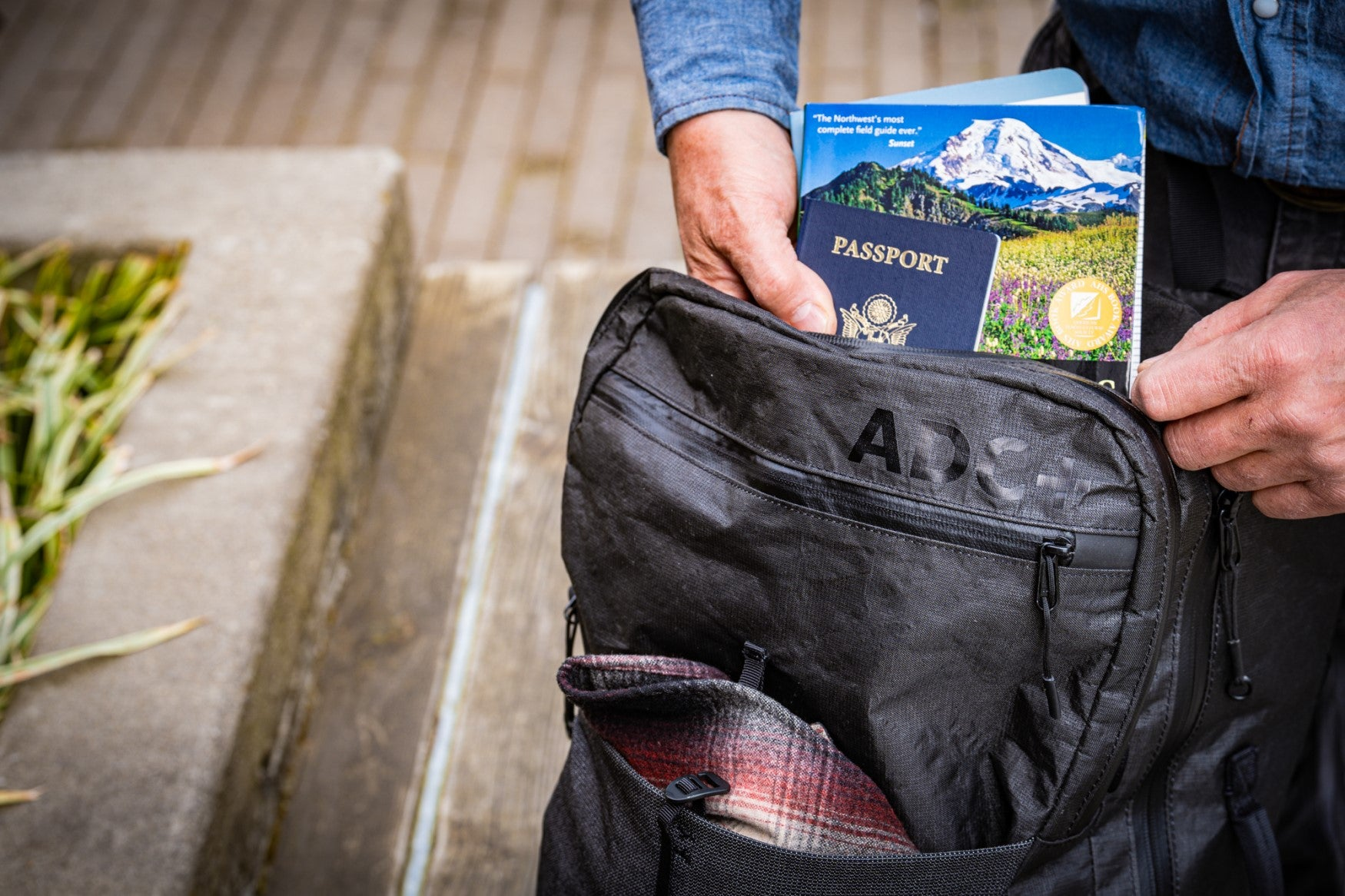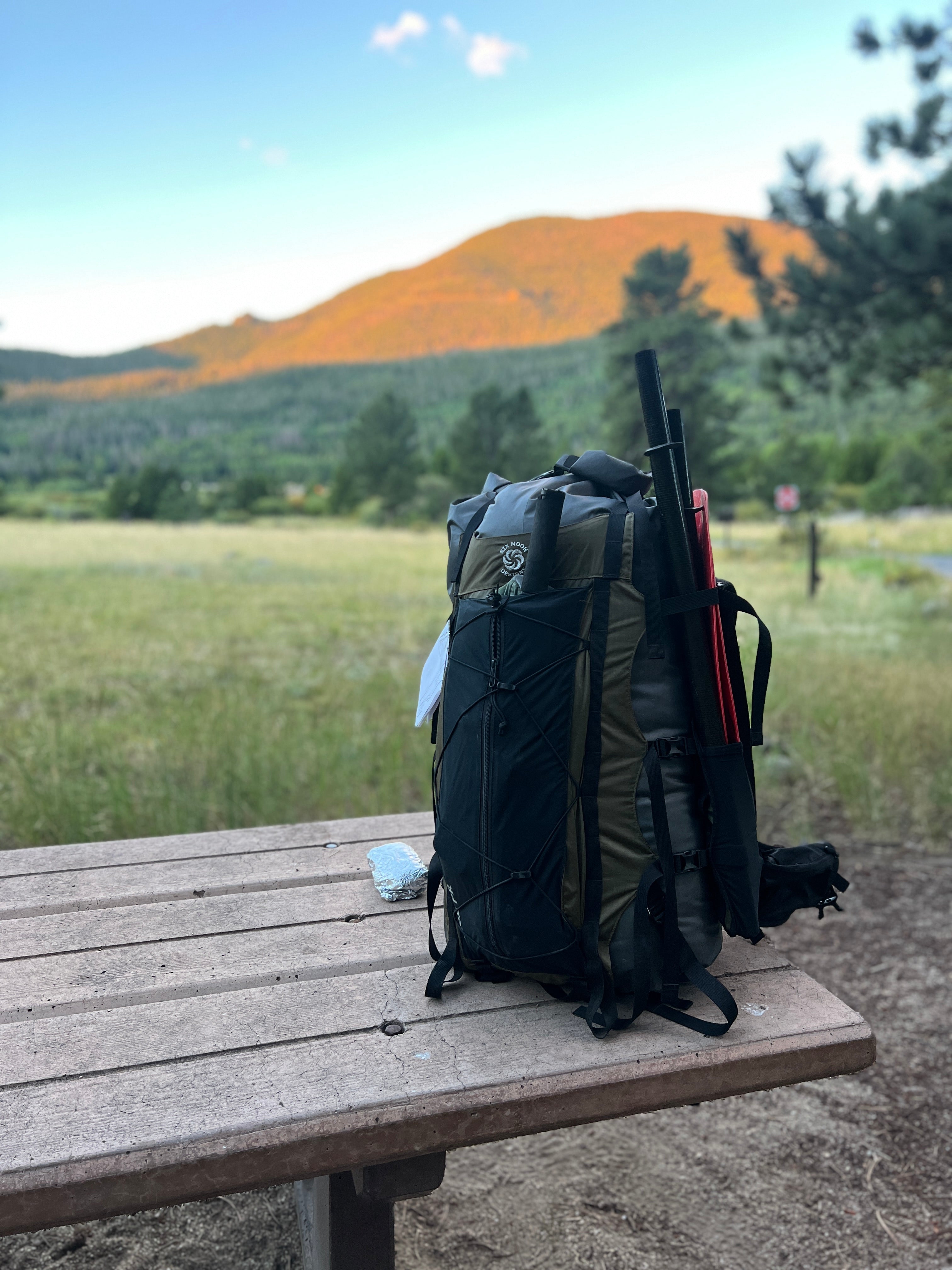Reflections
My personal opinion of his trip is that actually, it was a success in many ways, although we were not able to complete the run. I also believe that an objective analysis of both incidents can attribute those incidents to the water level being too high. There are two locations where we realistically should have called the trip off and turned around. One location was when Aaron and Ted decided they were not going on the trip on Sunday night. Two out of seven people bailing is a solid indicator of sketchy decision-making. We were sitting around in Aaron's living room discussing the merits of a high-water trip versus bailing. They decided it was out of their comfort zone. They are cautious people by nature, and it was the right choice.
The other location where we should have called the trip off was once we were at the downed trees on the road to put in. The two large hardwood trees presented a significant challenge which I considered to be insurmountable given the size of our chainsaw bar and the skill that I have with a chainsaw. Josh however was skilled enough to cut the tree and then use his truck to pull it out of the road. This tree removal cost us a full hour or more on a day when we knew we were already racing daylight. Even if we had cut the tree fully out of the road, this is another turning point where it would have been smart to call the trip off.
Some things we did well at those two turning points was that the entire group was fully engaged in the decision-making process to continue going and we were fully aware of the types of consequences that a high water trip would entail. Mainly the increased hazard of log portages in swift water, the potential for long swims, and the possibility of losing boats or having to hike out. There was no peer pressure from any member for us to continue the trip at the expense of other members. We all accepted that it would be an adventure and we all committed to working together as a group to complete the trip.

Should we have gone?
In hindsight, after having lost the raft, which had phones, wallets, and camping gear in it… I should have called the trip off due to high water. Knowing what I know now, I would not have gone. Jeremiah, whose raft it is, said he still would have gone because he was able to learn so much and because of the camaraderie and the success that we did feel in accomplishing the reconnaissance on the logistics and feel for the run. We learned a lot about working together, and our group dynamic was amazing. We also learned a lot about how to pack for a winter trip where weight is a serious consideration as is what you're going to need to survive as a group in this wet backcountry setting. We learned about which things are truly essentials, and should be carried on your person and not in your boat. We learned about our risk assessment systems and our tolerance levels for risk and adversity. Overall I would of course not recommend the trip we did to anyone else. After I go back in with half as much water, then we shall see if it deserves to be put on the “fun” list from Chrome Creek down. It takes a certain type of person to want to bushwack and brushsurf and logjam portage and suffer-fest in the rain all night. I guess I'm that kind of person. And surprisingly there are others out there who are as well. I will say when planning this trip that I was very clear in my expectations that everyone would have sufficient overnight survival gear. Thank goodness. I also turned away people who were interested in going on this trip with us, but whom either I did not know personally, have not boated with, or did not assess their skill set to be sufficient for the unknown and difficult stretch ahead. Those people who I turned away all took it in good spirit and agreed with me that it was for the best. Which I appreciate from them.
Another huge takeaway is what an amazing community the people of Gasquet are. They were so excited to go on a boat-finding mission and so willing to come pick us up from the middle of nowhere. We of course paid our shuttle drivers, but man what an adventure to ask them to undertake for really what is not that much money.
To avoid endangering others, I did try to mitigate the possibility of search and rescue being called on us, by communicating extensively with people who are quote “in the know” about the type of mission we were doing and the type of skill set that this crew has. A self-extraction was our plan B, and realistically there's nothing search and rescue could have done for us that we couldn't do for ourselves. I talked to Sylvia who owns the cabin at Major Moore's. She was fully advised that if we did not show up, it did not constitute an emergency and she should not expect to hear from us potentially for another day or two. My contacts with the outside world all went well through the In Reach device. Josh brought a battery charger so that we could make sure our phones and satellite devices were capable of being used continuously for our hike out. We were able to track our progress on the map and locate our logging road which was our egress point with no problem. The In-Reach was slow to work in the canyon but eventually, all the messages went through. I was really happy with how well our hike out was executed. That route is a great way to get back in as well.
Heuristic traps: Commitment and Scarcity
The primary heuristic trap that affected our group decision-making was the momentum of the trip, which we would call “Commitment.” The Ludlum house was the last night of the season that we would be able to rent it. We had already paid for it. We had driven pretty far. We had taken the time off work. We hired the shuttle driver and dragged Tom out there at 5 in the morning. We had cut the tree out of the road. We wanted to see something epic.
The flow window is dependent on winter storms, and sometimes winter storms snow in the north fork, so this early-season winter storm was hard to pass up on. The scarcity of the flow window is a factor, even though our flow window wasn't perfect, we were at least in the general correct idea of a flow window that had peaked and was then dropping.
Even being aware of these heuristic traps and talking about them, still wanting to go on the trip was an interesting conclusion to come to. I do feel like there came a point where we could have turned back when we saw the put-in water level, but it just seemed too difficult to hike back up the hill. At that point, we were committed and I think we had falsely told ourselves that putting in could still be a turnaround point. We could still call the trip off when we got to the put-in. But realistically I think the last point we could have called the trip off was during the drive-in. In the future, being realistic about my last turnaround point is important.

The gear
I have maybe never been so wet in my life, it is just as wet on the inside of a dry suit as it is on the outside of a dry suit when you're carrying a heavy load down a steep bank in the rain. I started with wet base layers from using a chainsaw on the road in the pouring rain. Then I put on a dry suit over a fleece base layer, wearing neoprene hydro skin pants on the bottom and a nano puff on top. This is my go-to winter boating outfit for very cold and wet conditions. I knew I would sweat in it, but I chose to wear it anyway, figuring it would be easier to carry on my body than in my bag. In retrospect, I probably would have worn regular pants and a shirt for the hike, let them get completely soaked, and then had the dry fleece onesie to put on at put in. It would have been extra difficult to carry the dry suit and onesie in my dry bag which was already full of overnight gear, but I think it would have been worth it.

The other thing I did was put Carhartt overalls on top of my dry suit to protect it from pinholes in the brush. The Carhartts worked great, but when I got to the put-in in they were soaking wet and extremely heavy and I had no way to dry them out. They added several pounds to my pack which I now had to carry downstream and over log portages, and eventually back up the mountain for our hike out. Wearing something lightweight that I could ring the water out of would have been a better choice.

The Six Moon Designs Flex pack was great, I was able to put the kayak rolled up in a vertical position against my back, and then my tube-shaped dry bag on the outside. I strapped my life jacket to the top of it all. I was a little worried about the cinnamon roll end of my inflatable kayak sticking out the bottom of the pack, it is exposed to potential puncture or tear when I was scooting on my butt down the hill. The other things I liked about this pack were the shoulder strap pockets. I was able to put my In Reach device and my camera each in one pocket and then my water bottle had a pocket on the side. The hip belt adjustment system worked nicely for me too, my pack was stable. It didn't wobble side to side too much.
Jeremiah had a lot more trouble getting his pack to work because all of his straps were not able to reach around his boat. His boat being a raft did not roll as well as my IK. He made it generally into a big cube shape and it wasn't stable from left to right. I will say I've been using this pack for loads that exceed the recommended weight capacity, and the material has begun to tear in several places. I'll take some photos of the failure points so that the awesome team over at Six Moon Designs can work on strengthening them.

Some things I wish I had brought with me on this trip: my Tyvek ground cloth, which would have been better than the bivy sack as an emergency shelter for loaning to my friends. I brought the bivy as an extra, I had planned to sleep under my Six Moon Designs tent fly in my IK as my air mattress. But the reality was that the humidity in the air was so high that getting inside a bivy sack was pretty darn wet due to the evaporation of the human body. It would have been more comfortable I think to have a ground moisture barrier as a plan B sleeping situation. I have the Tyvek ground tarp that came with my Six Moon Designs ambassador package, and I will use that next time. I also think that when packing for a trip like this, it is important that all your maps and communication devices be kept on your person instead of in your boat, given how fast the boat got away from us and how far downstream it went. If our only navigating devices had been in that boat, we would have been very sad. I had intensively researched the satellite imagery of our chosen section ahead of time, I knew where the logging roads were rough, I knew where the clear-cuts were and the easier locations for walking. However, I'll tell you what. It's a great feeling to be able to look at an actual map and see your current GPS location regarding those egress points. My phone had all the maps downloaded ahead of time and that together with my In Reach I kept on the inside of my dry suit while we were paddling. Things I did not keep inside my dry suit but should have included a lighter and a Duralog. Given the extremely wet situation. I think that as a group someone should have had access to probably a lighter per person and a Dural log or some kind of fire starter for every two people. The fire was key for our comfort that night spending it out there in the rainstorm. During summer trips, it would not be as much of a consideration.











Leave a comment
This site is protected by hCaptcha and the hCaptcha Privacy Policy and Terms of Service apply.